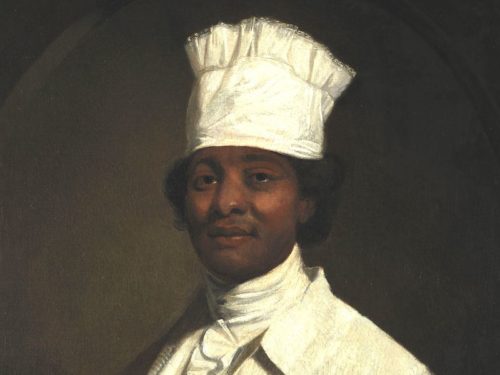How Enslaved Chefs Helped Shape American Cuisine
Share
Explore Our Galleries
Breaking News!
Today's news and culture by Black and other reporters in the Black and mainstream media.
Ways to Support ABHM?
By Kelley Fanto Deetz, Smithsonian
It is the story of people like Chef Hercules, our nation’s first White House chef; and Emmanuel Jones, who used his skills to transition out of enslavement into a successful career cooking in the food industry, evading the oppressive trappings of sharecropping. It is also the story of countless unnamed cooks across the South, the details of their existences now lost. But from its most famous to its anonymous practitioners, the story of Southern cuisine is inseparable from the story of American racism. It’s double-edged—full of pain—but also of pride. Reckoning with it can be cumbersome, but it’s also necessary. The stories of enslaved cooks teach us that we can love our country and also be critical of it, and find some peace along the way.

It’s not easy uncovering the histories of enslaved cooks, who left few records of their own and whose stories often appear in the historical record as asides—incidental details sprinkled through the stories of the people who held them in bondage. In my recent study of enslaved cooks, I relied on archaeological evidence and material culture—the rooms where they once lived, the heavy cast iron pots they lugged around, the gardens they planted—and documents such as slaveholders’ letters, cookbooks, and plantation records to learn about their experiences. These remnants, scant though they are, make it clear that enslaved cooks were central players in the birth of our nation’s cultural heritage….
Black cooks were bound to the fire, 24 hours a day. They lived in the kitchen, sleeping upstairs above the hearth during the winters, and outside come summertime. Up every day before dawn, they baked bread for the mornings, cooked soups for the afternoons, and created divine feasts for the evenings. They roasted meats, made jellies, cooked puddings, and crafted desserts, preparing several meals a day for the white family. They also had to feed every free person who passed through the plantation. If a traveler showed up, day or night, bells would ring for the enslaved cook to prepare food. For a guest, this must have been delightful: biscuits, ham, and some brandy, all made on site, ready to eat at 2:30 a.m. or whenever you pleased. For the cooks, it must have been a different kind of experience….
Read the full article here.
Read more Breaking News here.
View more galleries from the ABHM here.









Comments Are Welcome
Note: We moderate submissions in order to create a space for meaningful dialogue, a space where museum visitors – adults and youth –– can exchange informed, thoughtful, and relevant comments that add value to our exhibits.
Racial slurs, personal attacks, obscenity, profanity, and SHOUTING do not meet the above standard. Such comments are posted in the exhibit Hateful Speech. Commercial promotions, impersonations, and incoherent comments likewise fail to meet our goals, so will not be posted. Submissions longer than 120 words will be shortened.
See our full Comments Policy here.